Bangladesh - Chittagong Hill Tracts
I want to start by thanking everybody for the wonderful comments on my other posts. I'm very glad that my photos and posts have such a great audience
Here is a series from another part of Bangladesh that I visited:
The Chittagong Hill Tracts are located in south-eastern Bangladesh, near the borders of Myanmar (Burma) and India. Out of an estimated population of between 1 and 1.5 million people, around 50% are tribal peoples. Another 45% are Bengali Muslim settlers that moved into the area. The forced Bengali settlement began in the 1970's and 1980's, it was fiercely resisted by the tribal population who formed guerilla groups such as the Shanti Bahini. This particular group no longer engages in military operations following the signing of a peace treaty with the Bangladeshi government on 2 Dec. 1997.
The Bangladeshi government, military and settlers have been accused of various human rights abuses, killings, torture and committing genocide against the tribal peoples. Various massacres took place during the 1980's and early 1990's until a peace treaty was signed in 1996. Amnesty International has excellent documentation of what happened available on their website.
Traveling in the hill tracts today is fairly difficult due to the restrictions imposed on foreigners by the government. Many areas are completely off limits to foreigners, others are possible to visit with a special permit which is somewhat difficult to arrange. When visiting some villages, a police escort is necessary in order to be allowed into the area where they are located. There is still a small resistance/separatist movement active in the Hill Tracts, as well as various armed bandit groups who sometimes target foreigners in order to gain political influence or demand ransom. This happened to a group of Scandinavians who worked there. The place that arranged my permit for me was overran with gunmen who kidnapped a relative of the owner and kept him for ransom. A few months before I arrived in Banderban, a group of tourists was stopped and robbed by another bandit group, while the guide was kidnapped and held for ransom. Despite this, I really wanted to go and see the area, so I made arrangements for a permit.
It is very difficult for foreigners individually to go to the Hill Tracts. I had to arrange a room with a local tour agency for them to file all the necessary paperwork with the authorities on my behalf. This is absolutely necessary in order to be allowed through the many military and police checkpoints into the Bandarban area.
There were at least 9 people that had to receive my official paperwork so that I would be allowed through the checkpoints!
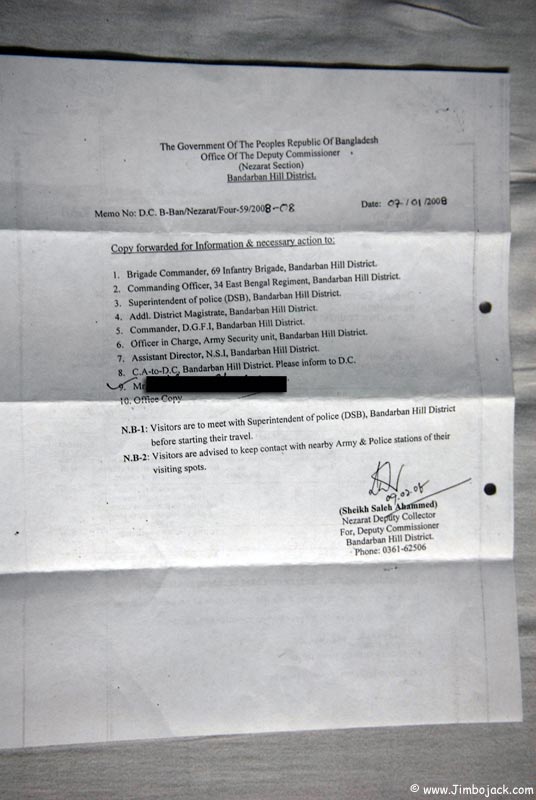
Once I had all the necessary paperwork, it was fairly easy to go through the few military/police checkpoints on the road to Banderban. As soon as I arrived a plain clothes policeman followed me until he was sure I was registered at the hotel I had reservations for (he followed me into the reception to make sure I was registered!), he finally left me alone when I went to my room.
The next morning I went with a local guide (strongly recommended by the police) to a local tribal market in the city of Banderban (I was actually staying a few kilometers outside of the city in the jungle). Here are some photos:
BTW, I should mention that tribal people hate having their picture taken, they usually refuse so I tried to shoot some candids in the streets/markets. Bengali people on the other hand love to pose for photos. While in Bangladesh, every day I had a lot of requests from people if they could take a picture with me as a souvenir for them. I felt like a rock star
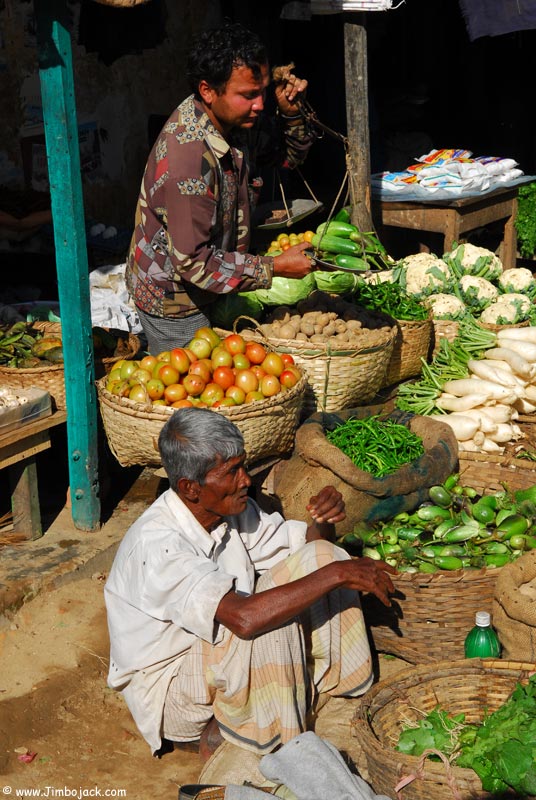
Women selling snails to be cooked. They are from the Marma tribe
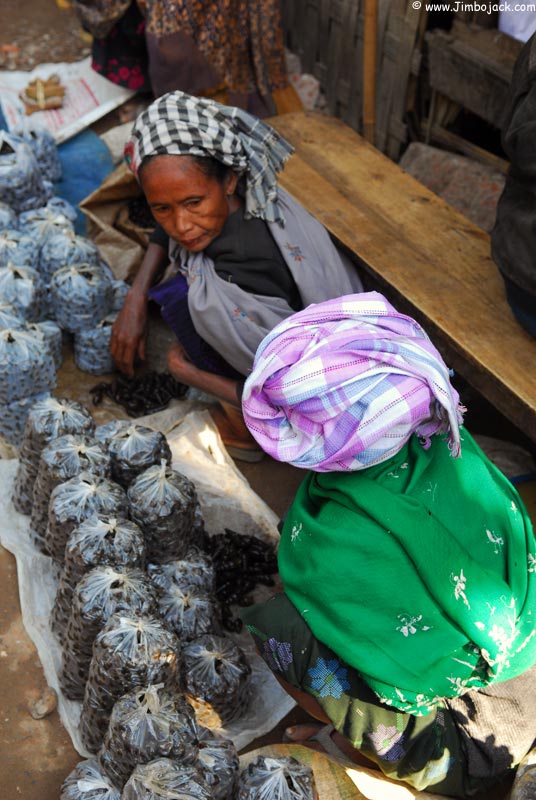

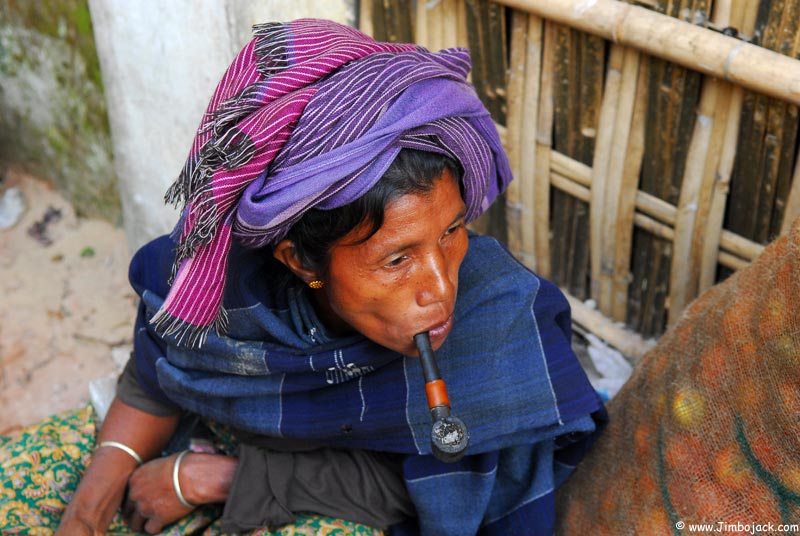
This is a Bangladeshi (Bengali) woman, notice how different she looks compared to the women above
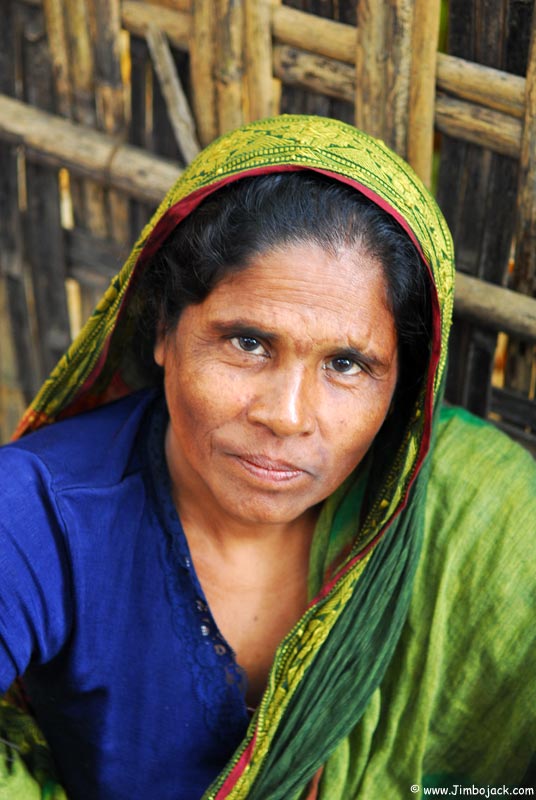
This is a Water Monitor lizard for sale at a market as food. To some tribes, this is considered a delicacy
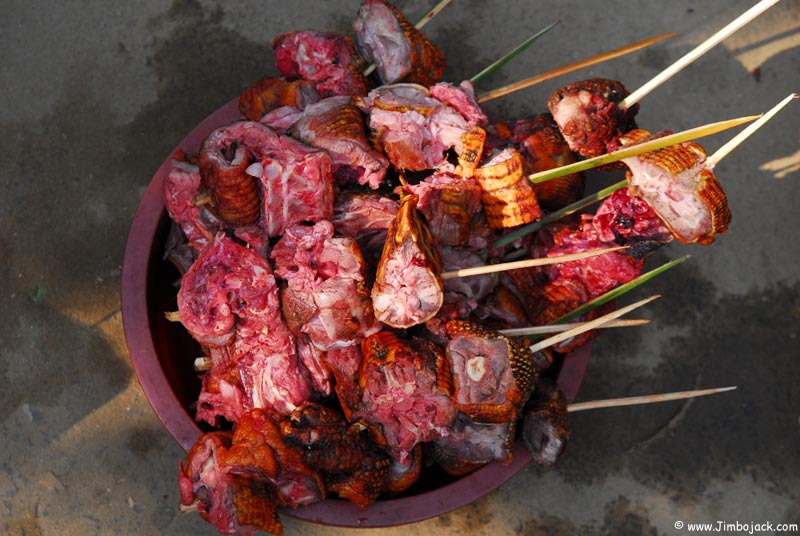
Pork, since the vast majority of Bangladesh is Muslim, you will only see this in tribal markets (Most tribal people are Animist, Buddhist or Christian)
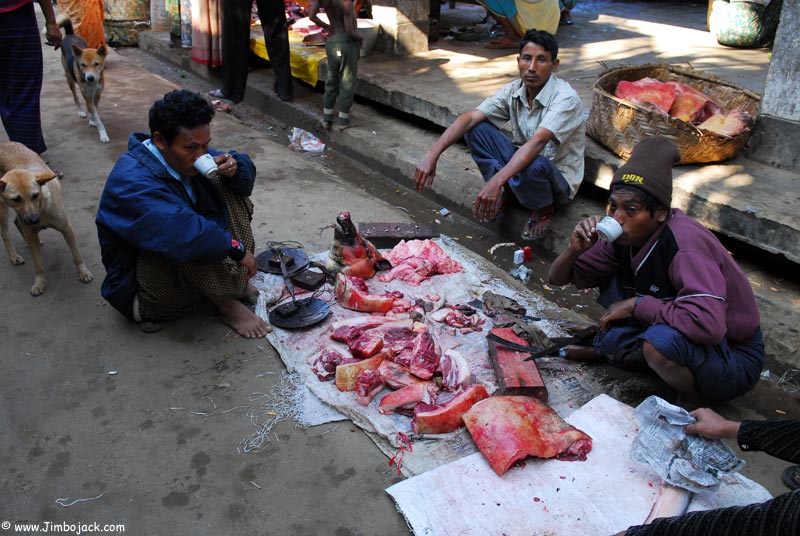
Boy selling betel nut leaves
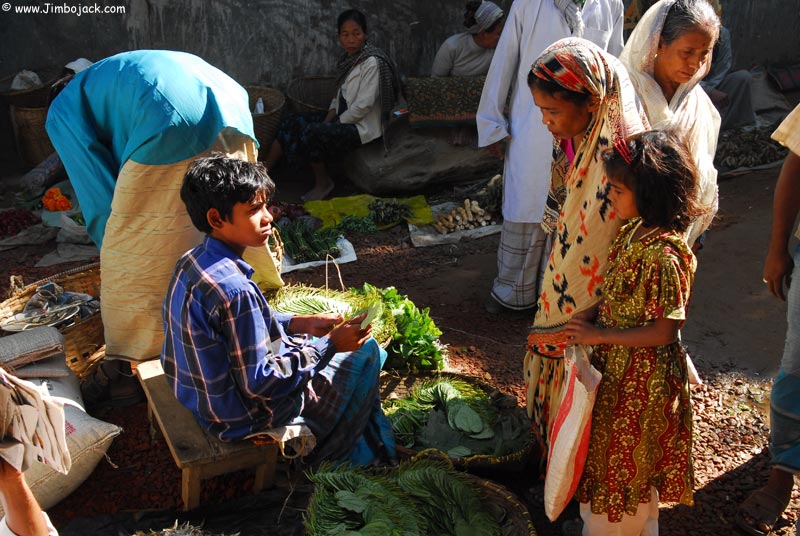
These are flowers from a shrub, they are used for cooking
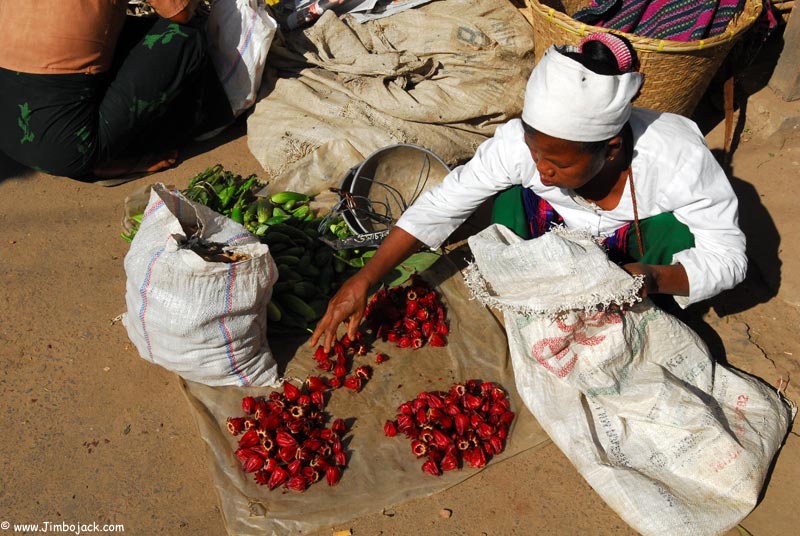
Bangladeshi (Bengali) Muslim woman buying dried fish
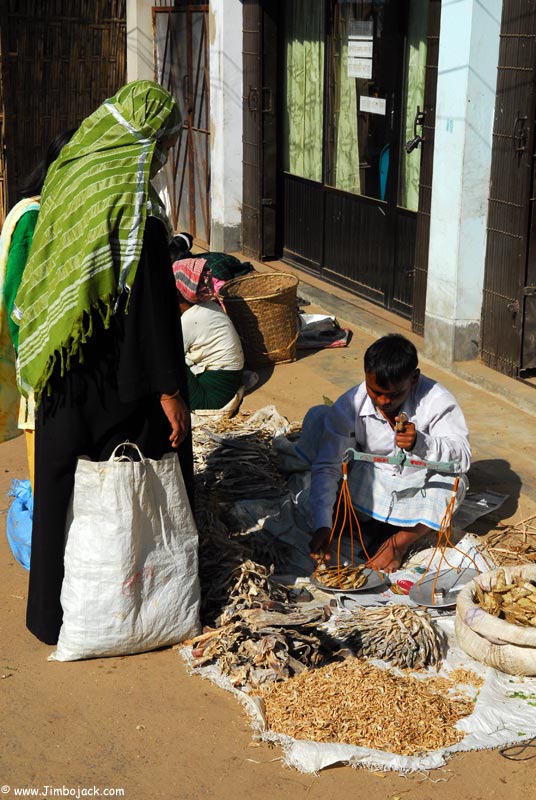
Man selling betel nuts. Many people in South Asia (Especially India & Bangladesh) chew them cut in pieces and wrapped in leaves as a stimulant. When I chewed it, it reminded me of chewing coca leaves in South America (It has the same mild numbing effect in your mouth)
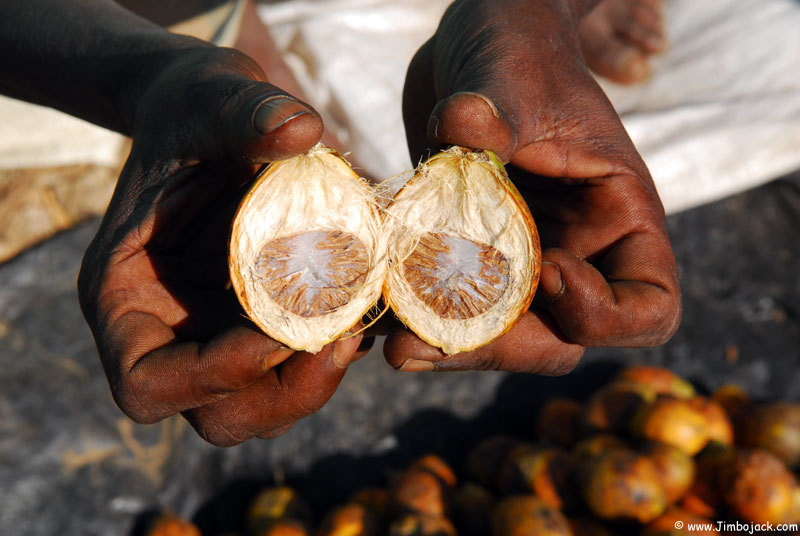
Various other tribal people at the market
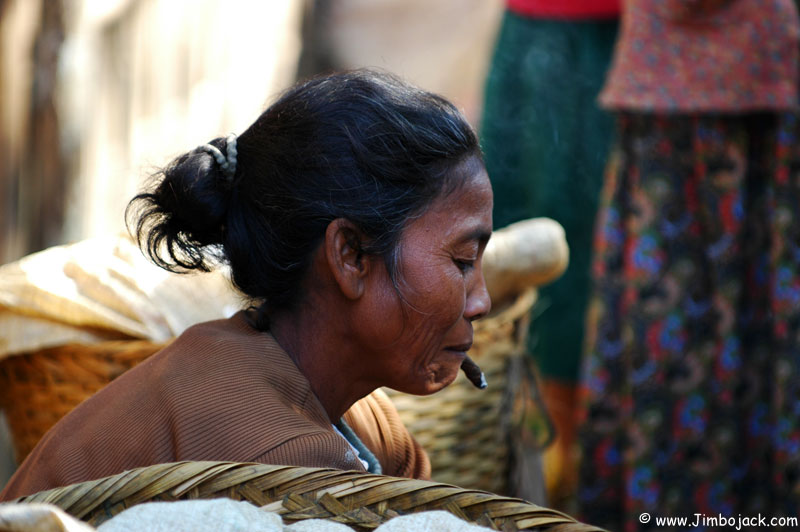
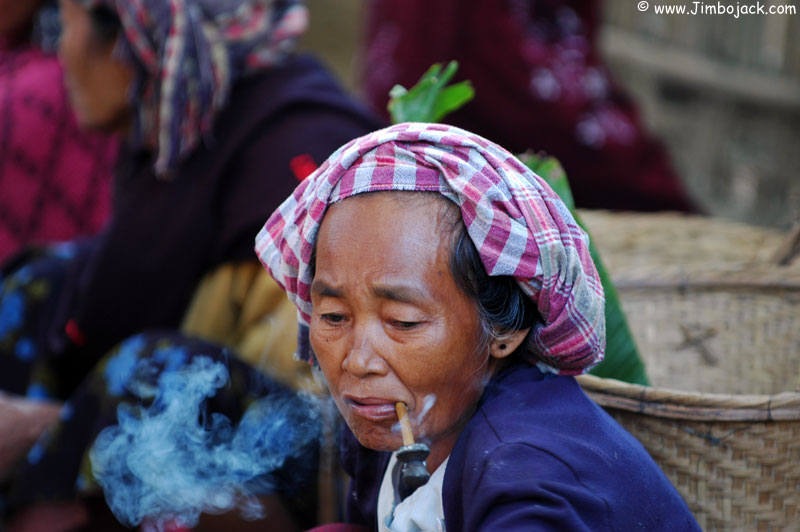
The woman below is Burmese, the design on her face is makeup
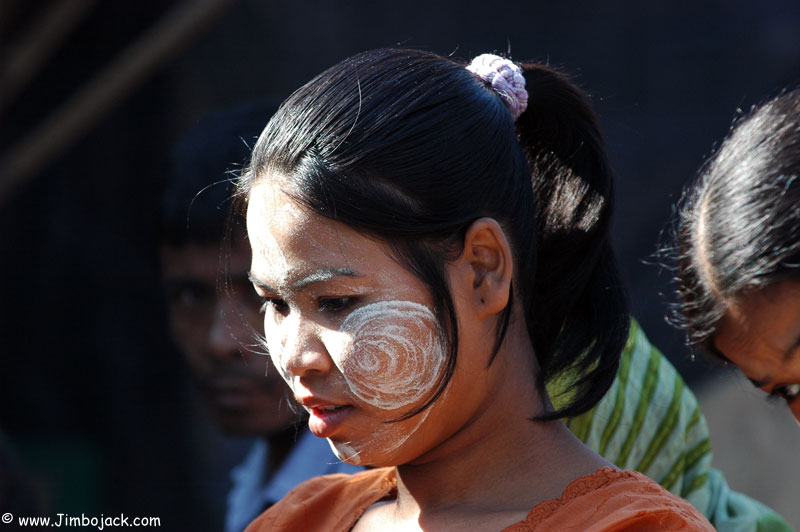
Following photos were taken on the river right next to the tribal market
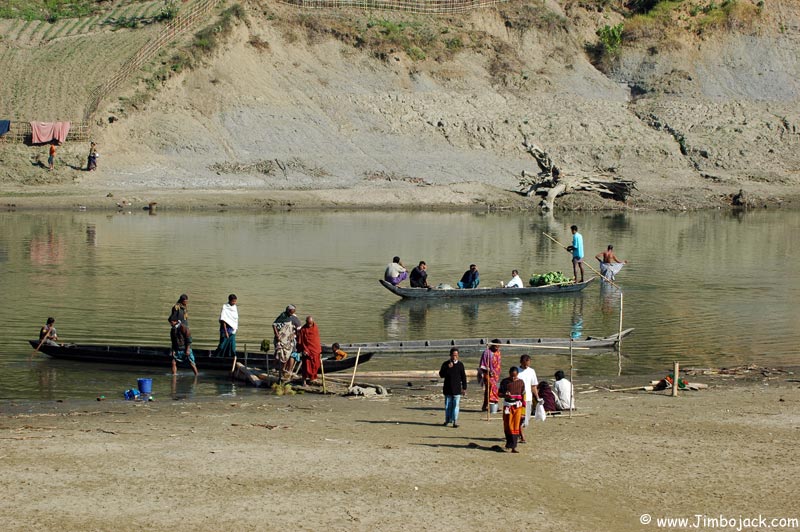
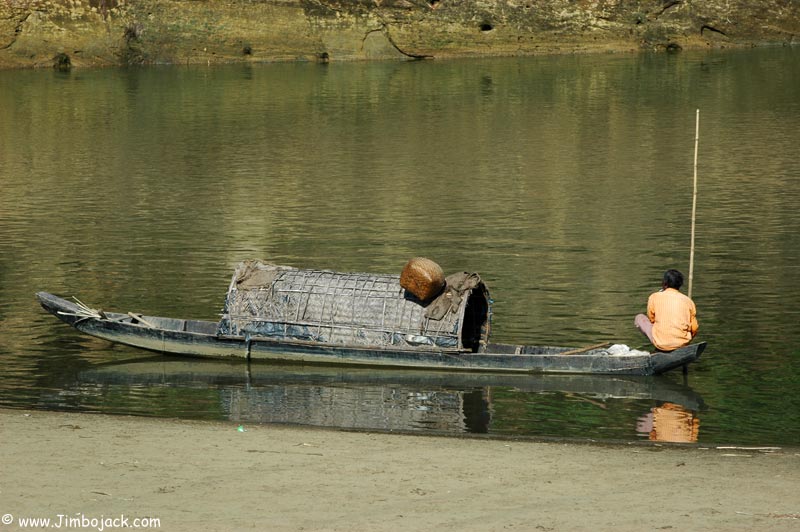
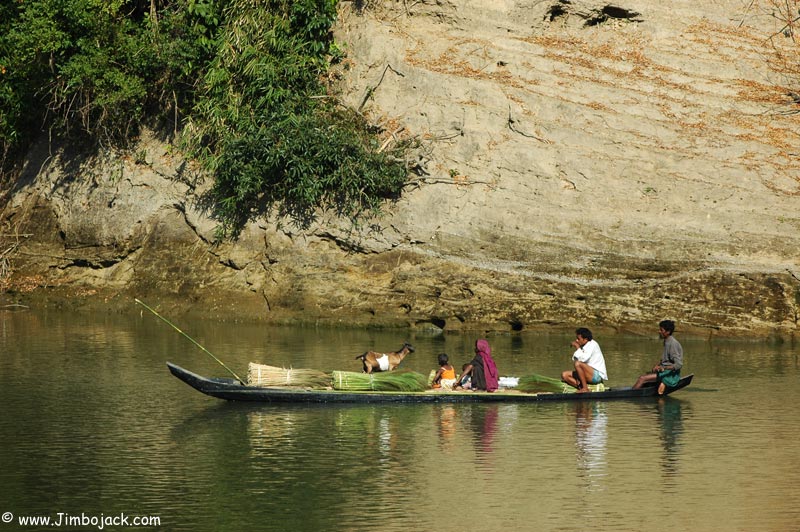
Local village, the tribe living here is Bawn. On the roof of the middle hut you can see a solar panel bought with a loan provided by the UN. These panels and possibly some car batteries provide all the electricity for the entire village.
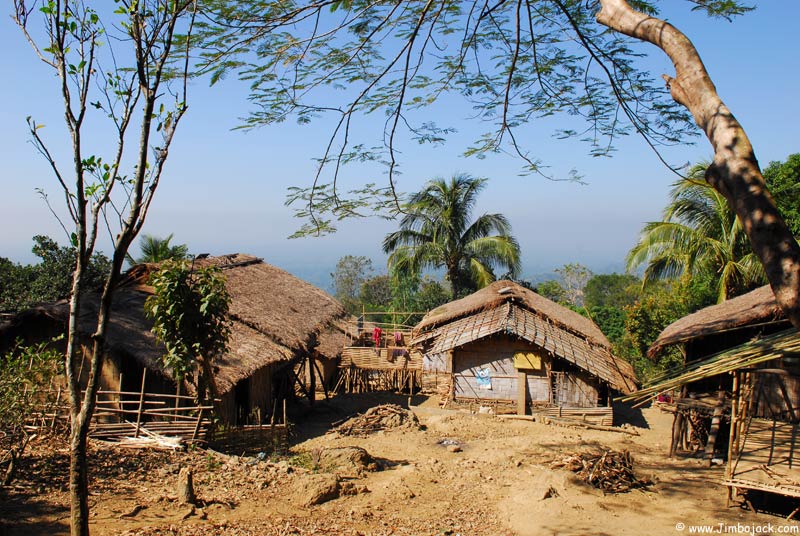
The person on the left was my guide during for the few days I stayed in Bandarban. Nobody in this village spoke Bangla (nobody in this area speaks English), without him I would have no way of communicating with the local people
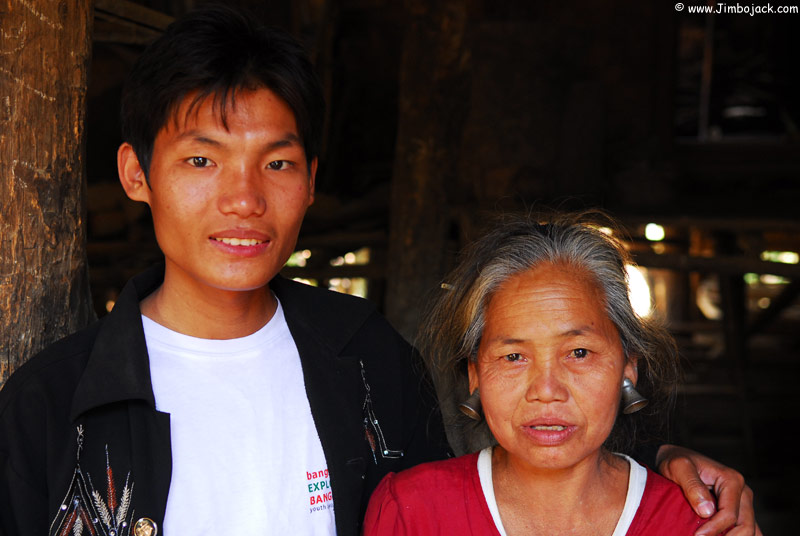
Inside of a typical family house, in this case there was a family of 7 people. The grandmother in the photo above, a husband and wife and 4 children. In some cases a family as big as 15 shares a house like this.
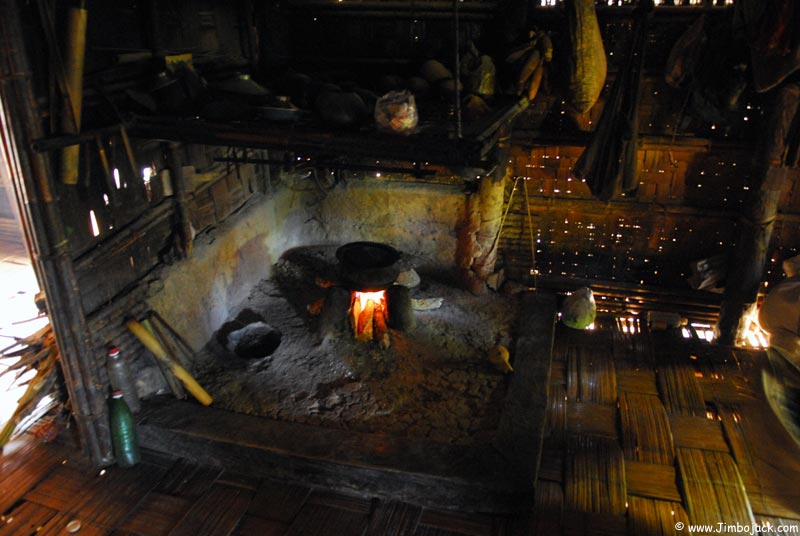
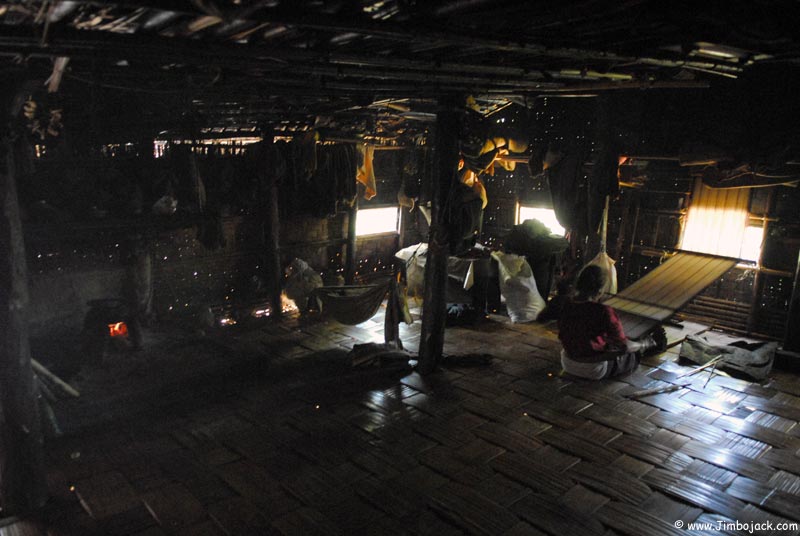
One of the kids that lived in the house became very curious about what I was doing in his home
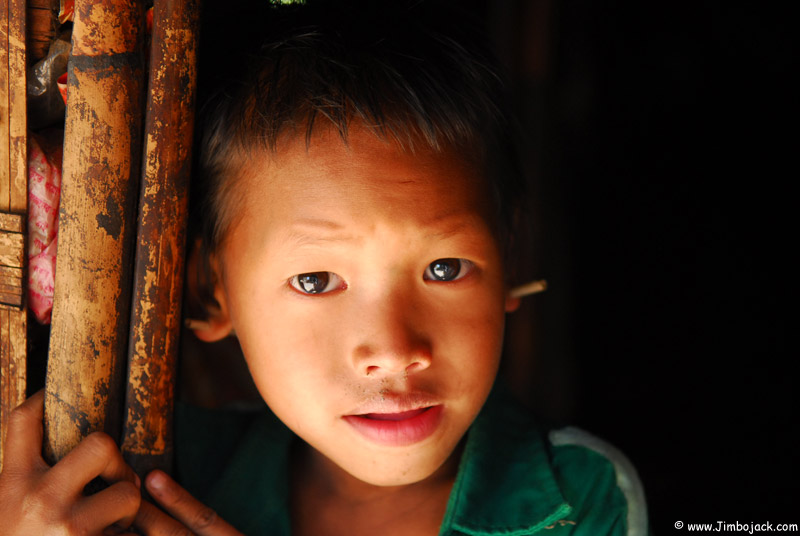
Chimbuk is in a very restricted area. Even though I had all the necessary permits, the only way I was able to go there was by hiring a car with a driver, a guide, and an escort of 3 armed police men who followed me around everywhere I went. Here they are outside of a hut I visited waiting for me.
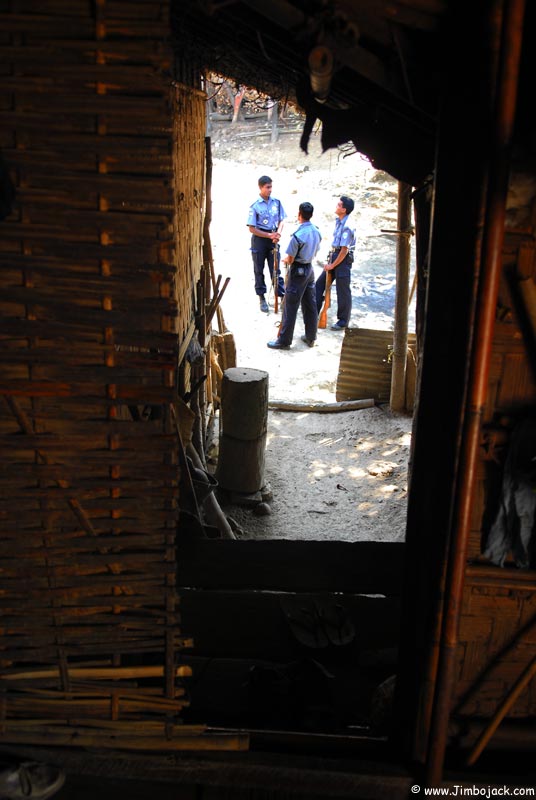
Kids in the village
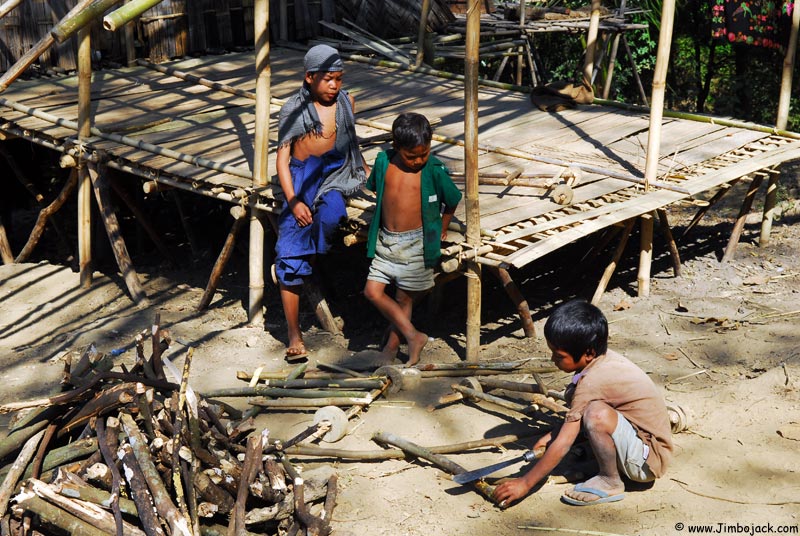
Photo of my car/ escort
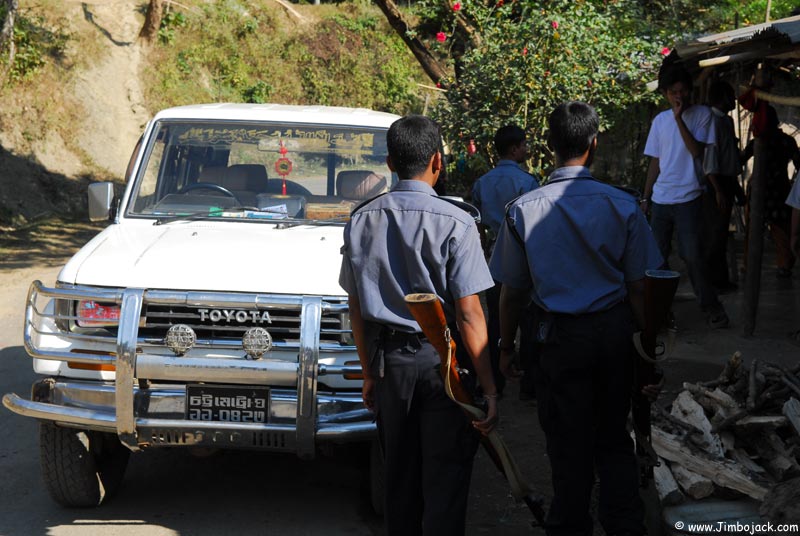
Inside of a local shop
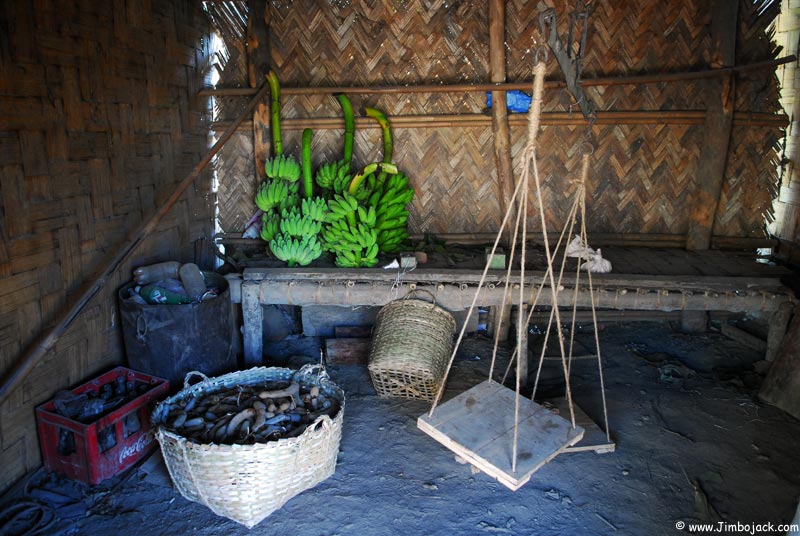
View of the surrounding hills
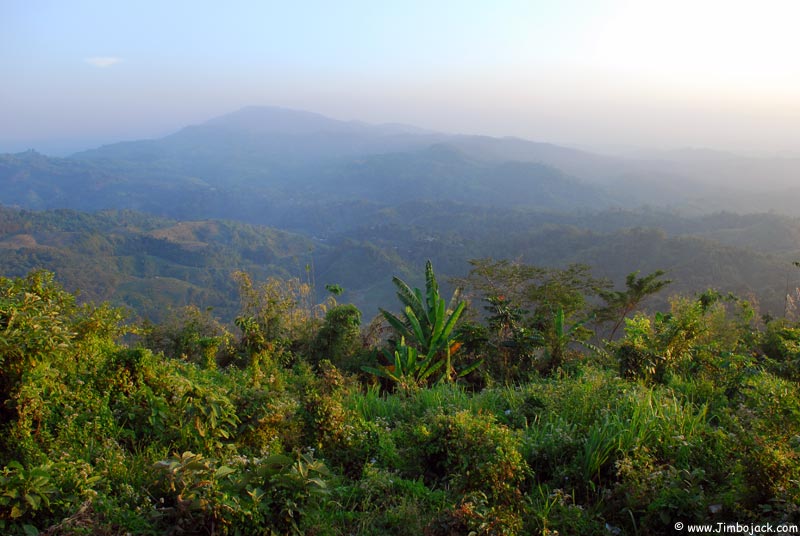
The next day I decided that I wanted to go to another village (Tripura tribe) Unfortunately I would not be able to go there without at least 2-3 armed police escorting me. I decided that I really didn't want to have them following me around (It's very intimidating to go into a tribal village with and armed police escort, nobody wants to talk to you and people tend to go into their houses). I came up with a story about wanting to go to the market, and lied to them about my plans. After a few minutes of arguing they decided it was ok for my guide and I to go by ourselves provided we only went to a local shop along the main road.
My guide and I went along the main road for a few hundred meters, and once we were far enough from the police with cut into the jungle and walked for a few kilometers through it to go to the village from another direction. It was a big detour, but it was also the best day I had in the Hill Tracts.
The following photos are from Bengali villages along the way.
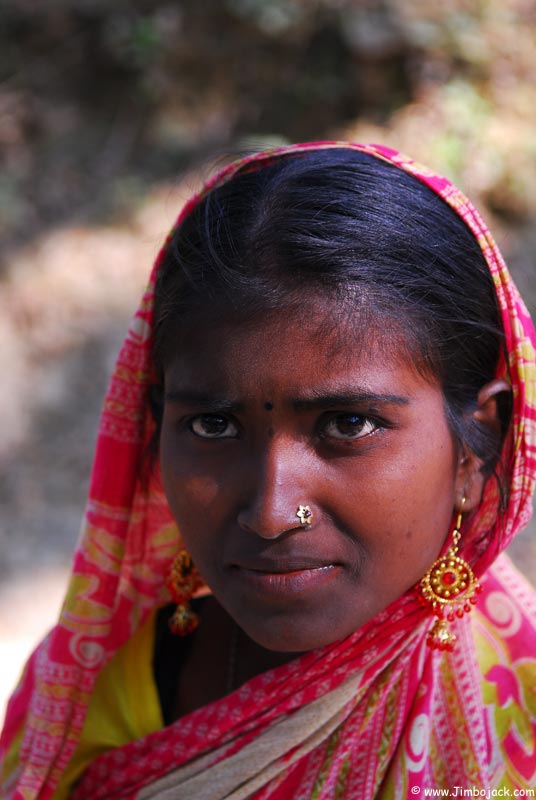
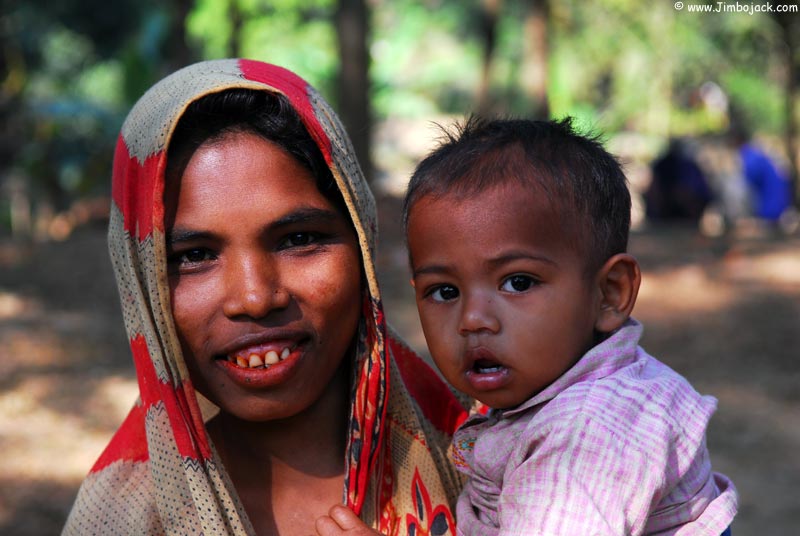
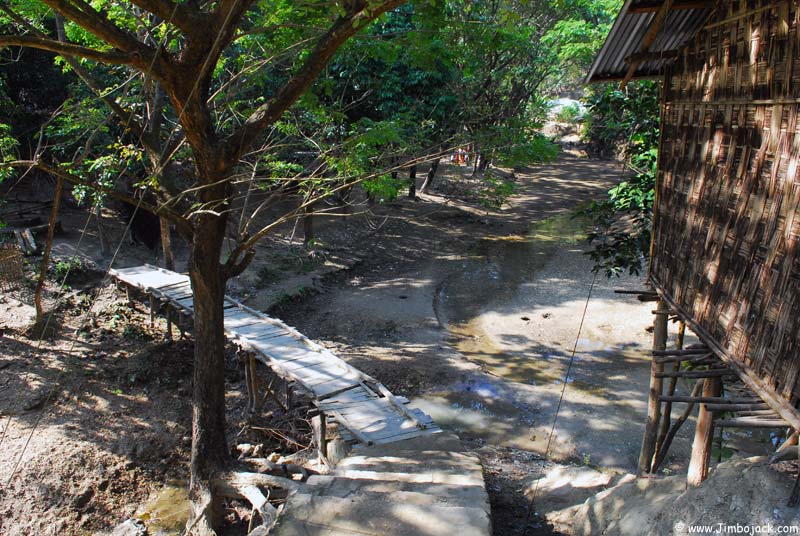
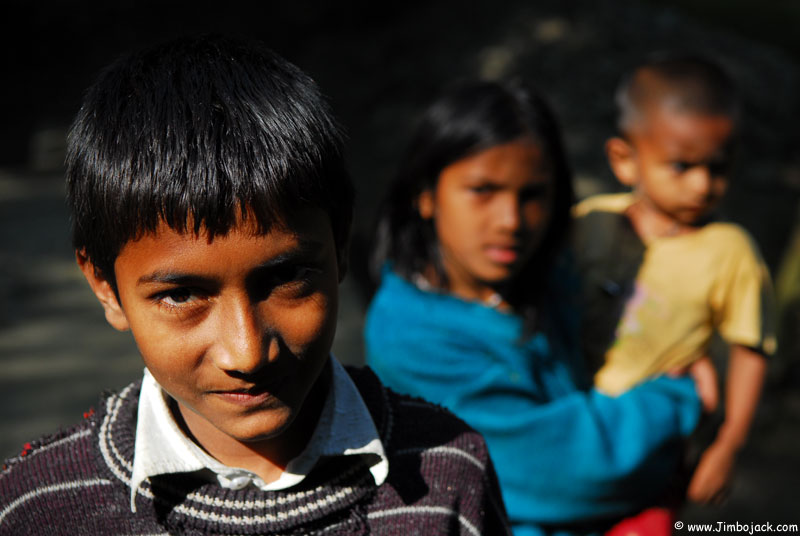
The rivers that run through the villages are usually pretty dirty. People wash their clothes, pans, dishes and bathe in the river. In order to have a supply of fresh water for drinking and cooking, small clean streams are used. Here the local villagers constructed a bamboo channel for the fresh water, making it easy to collect for household use.
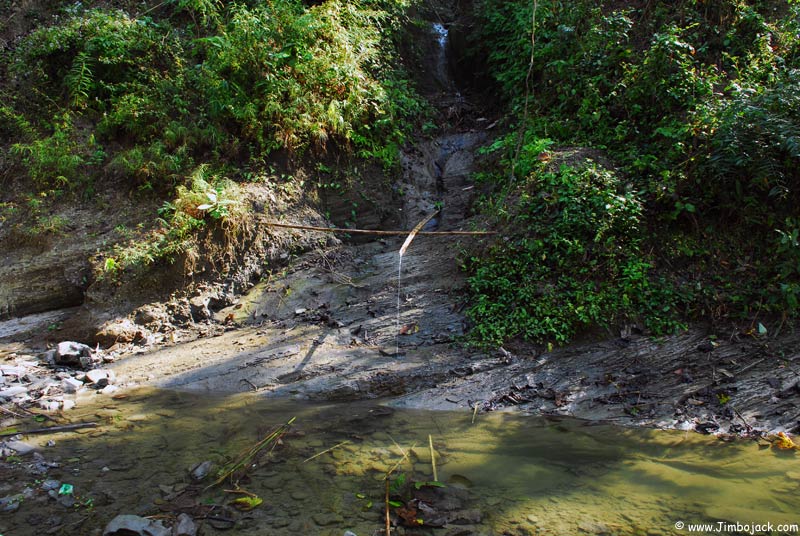
Following photos are from a Tripura village. Originally Buddhist, many of them were converted to Christianity by missionaries (Mostly by bribing them with food)
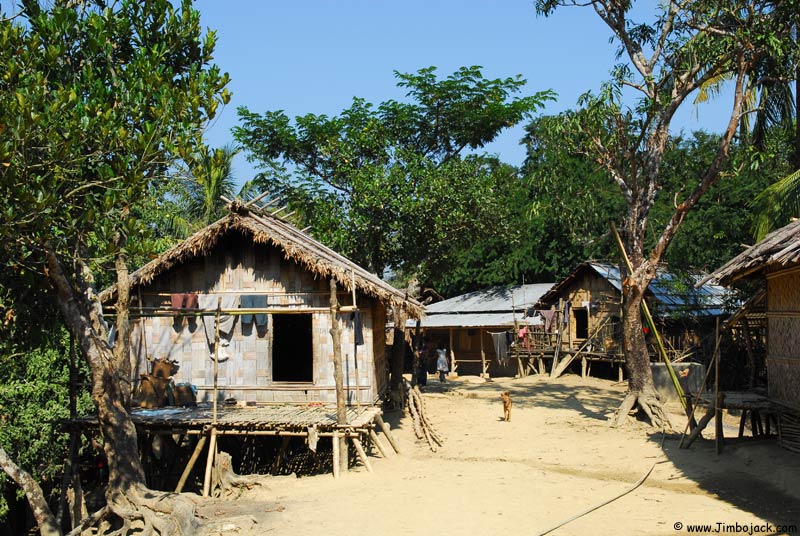
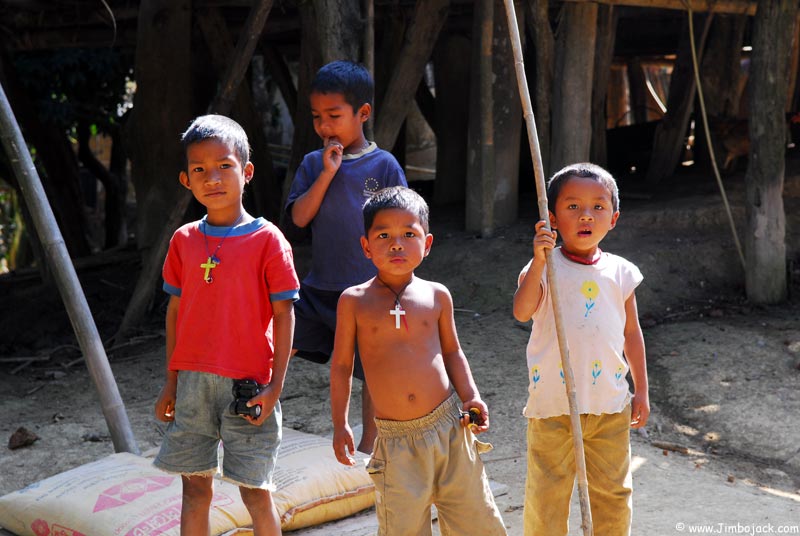
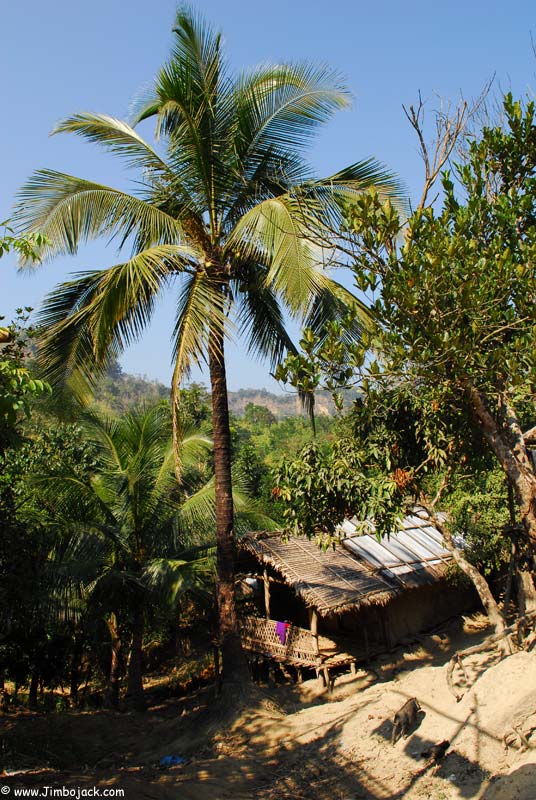
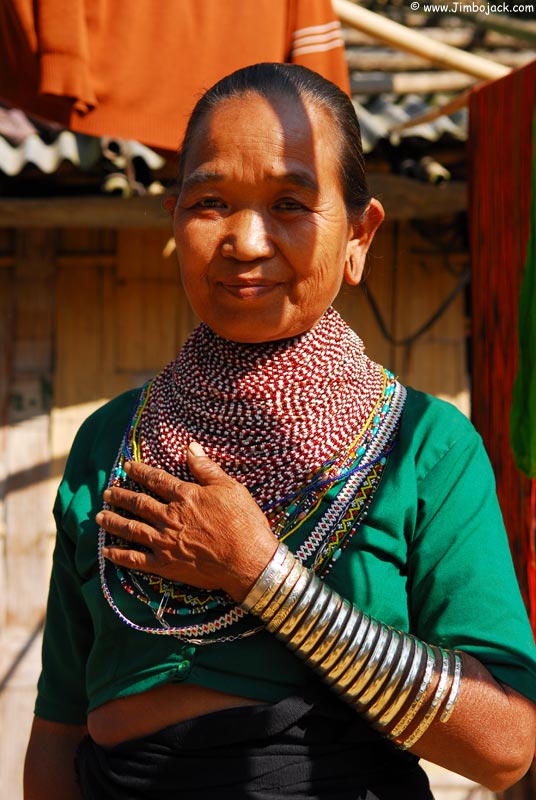
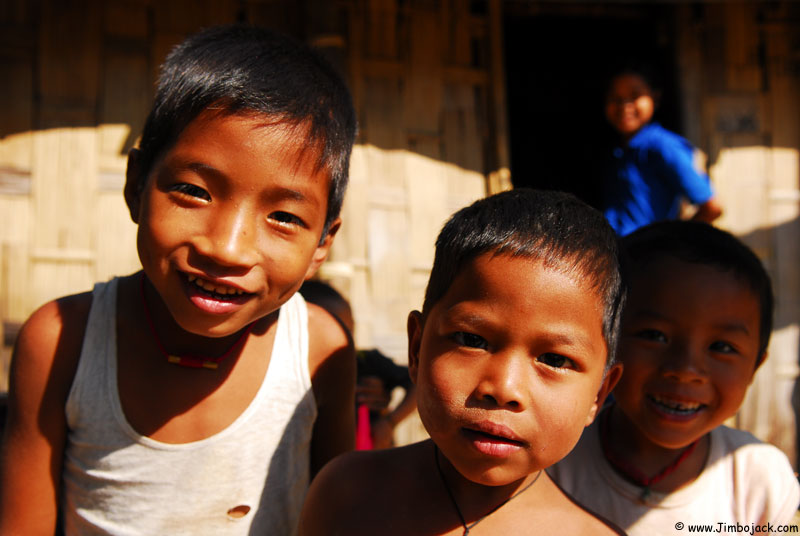
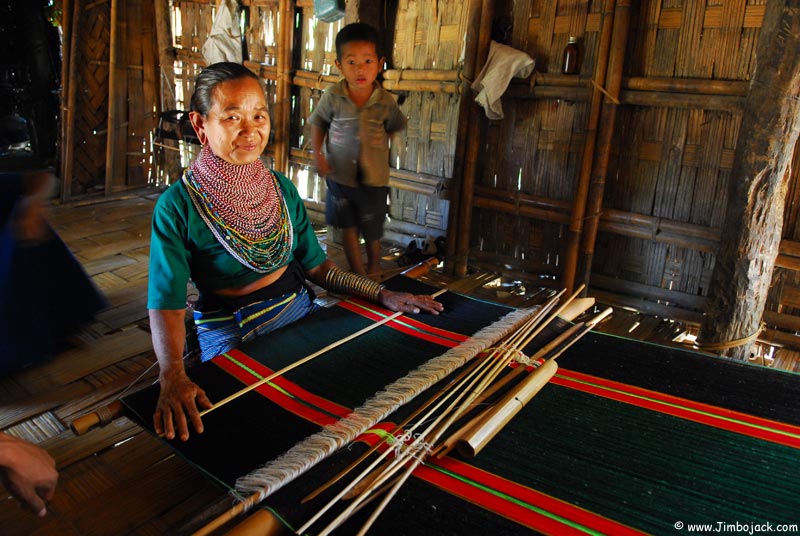
The following day I walked through the jungle down to the river and hired a local boat to take me to Bandarban
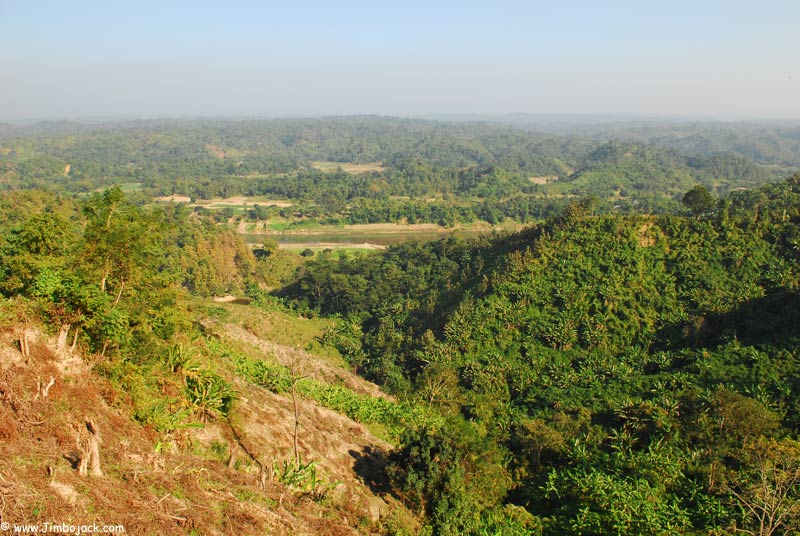
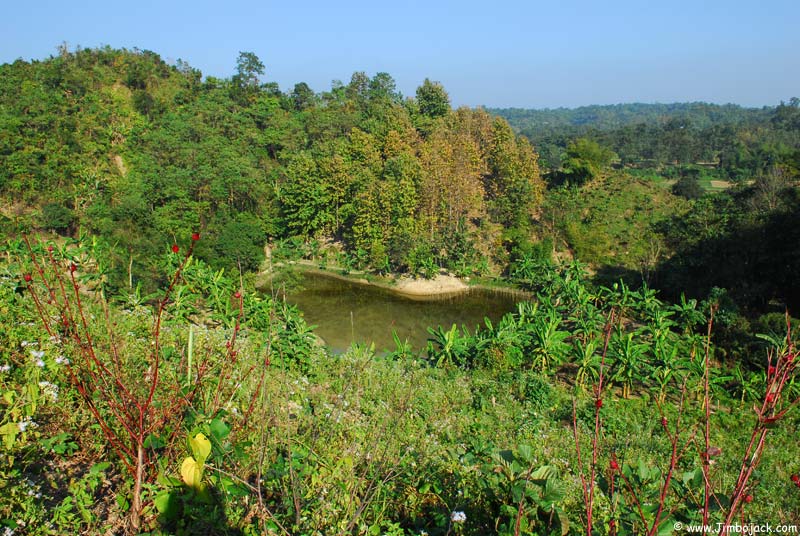
The water level in the river was pretty low when I was here, the dry parts of the riverbed contain very fertile soil and are used to grow vegetables.
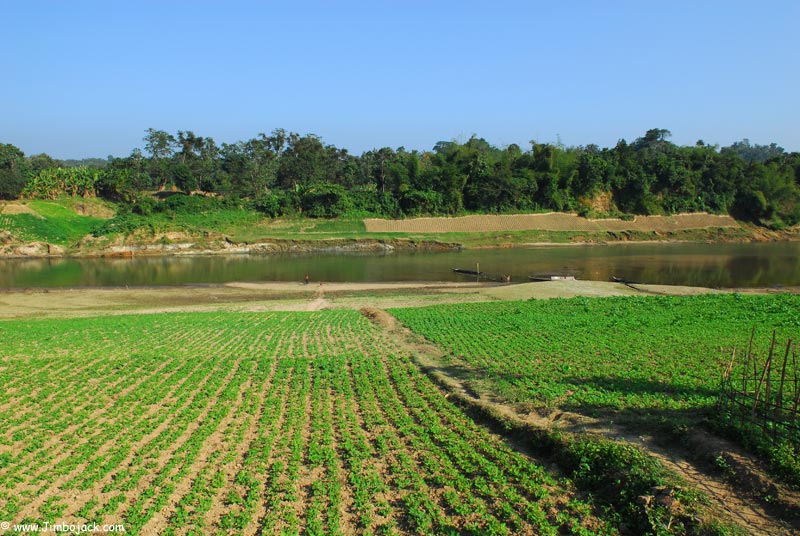
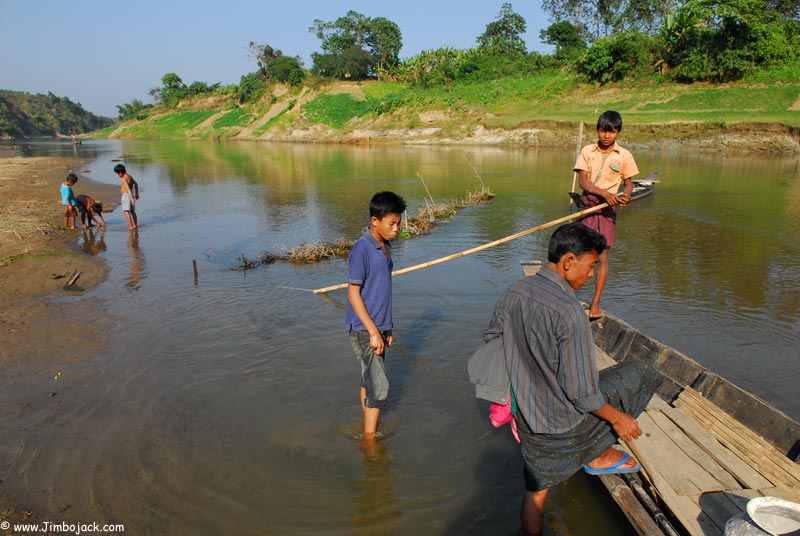
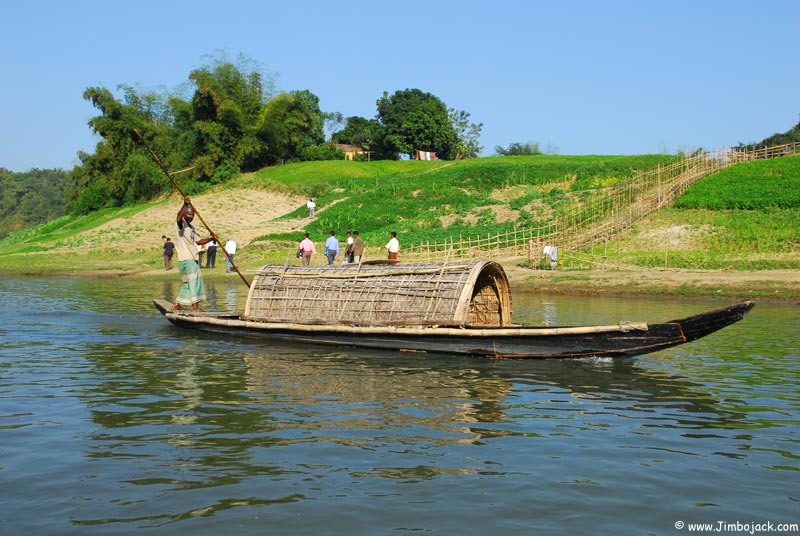
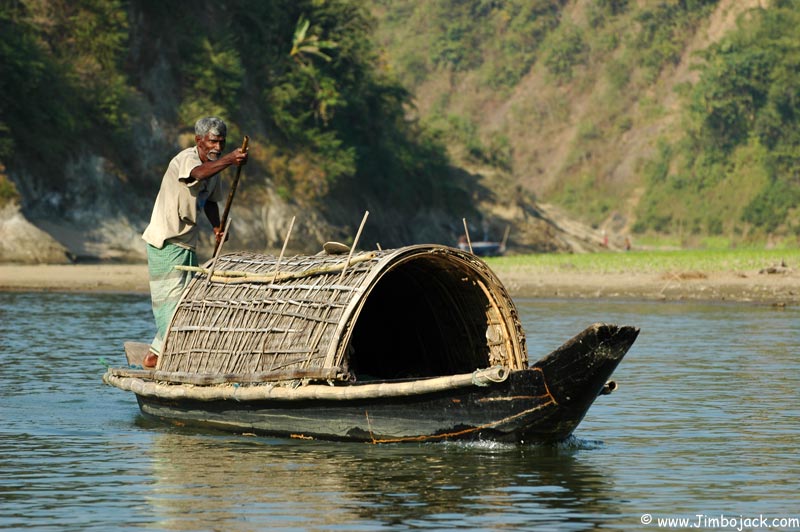
Woman bathing in the river
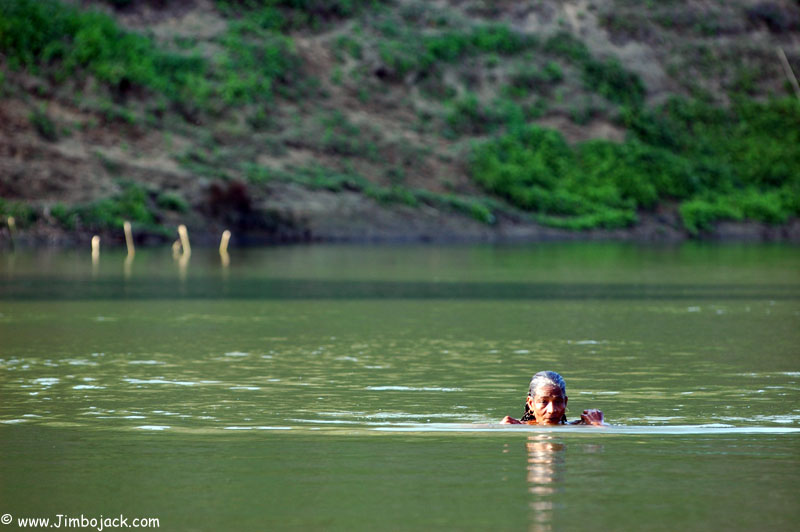
Burmese Buddhist temple in Bandarban
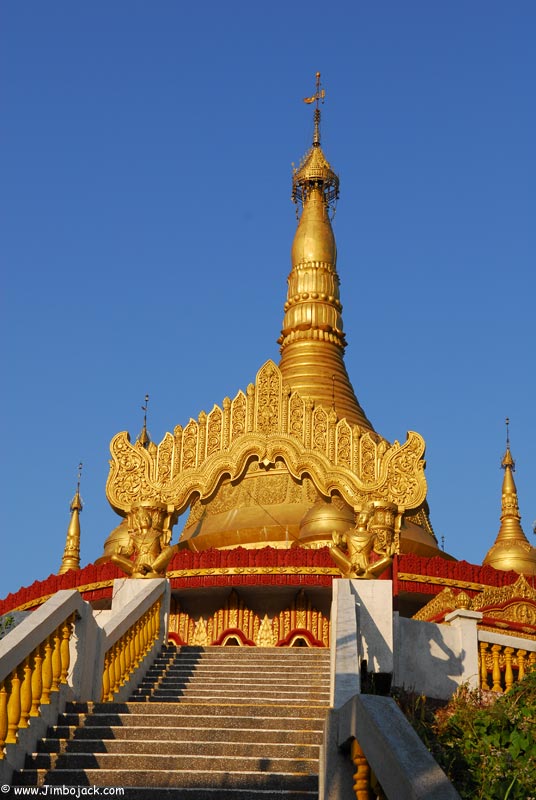
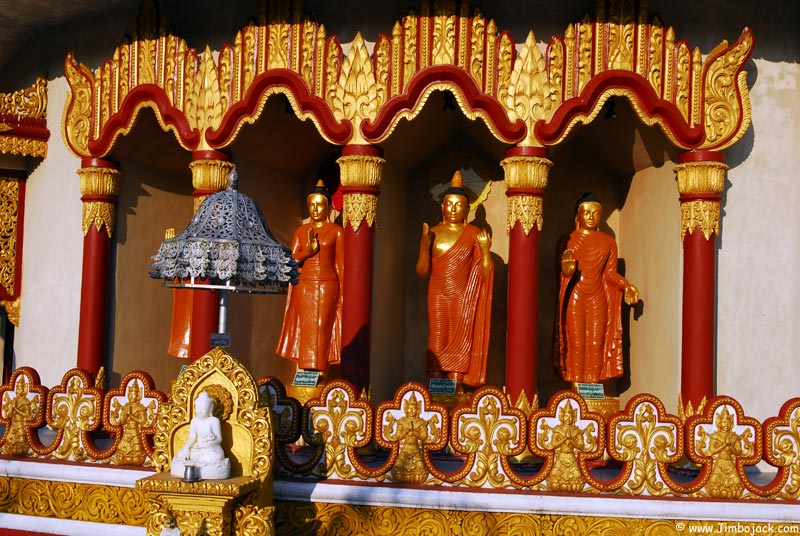
Boys at a local fair, the first one is selling betel nuts/leaves to chew, the second is working at a carnival game. If you throw the ring around the packet you win. Everybody wants the packs of cigarettes, second prize is....soap!
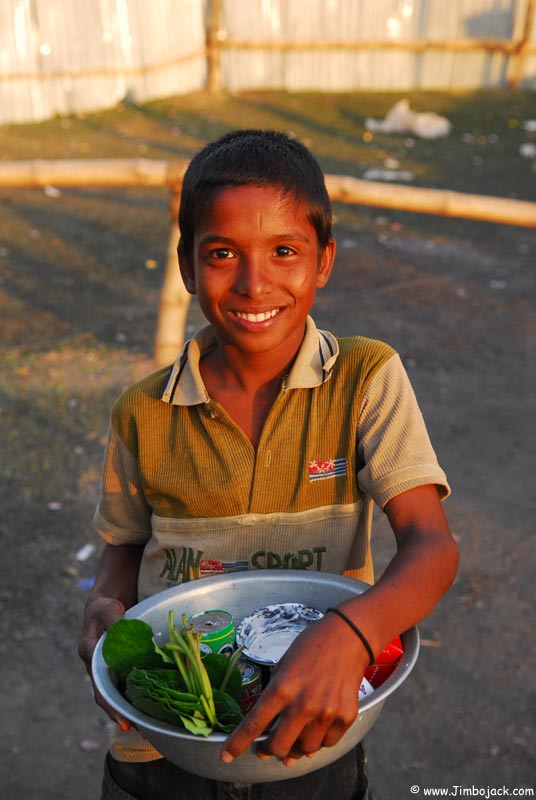
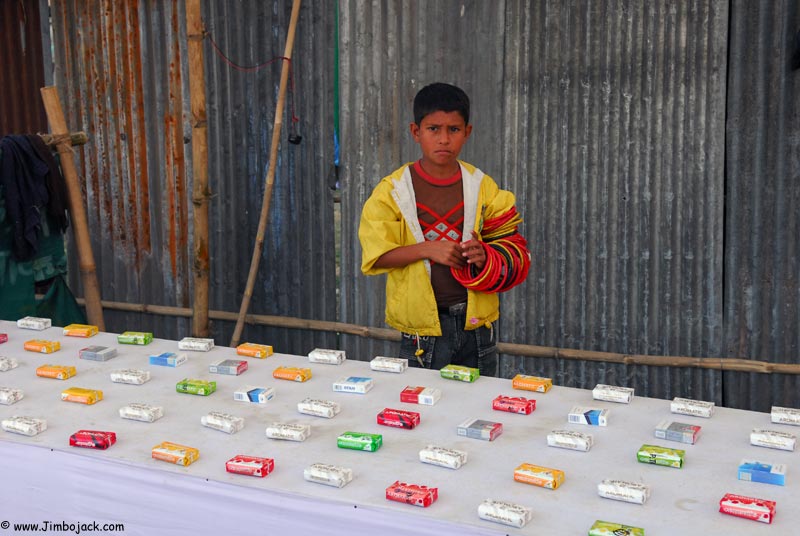
Views of and around the bamboo hut where I stayed. It was the most expensive accomodation I had during my stay in Bangladesh at $10 a night
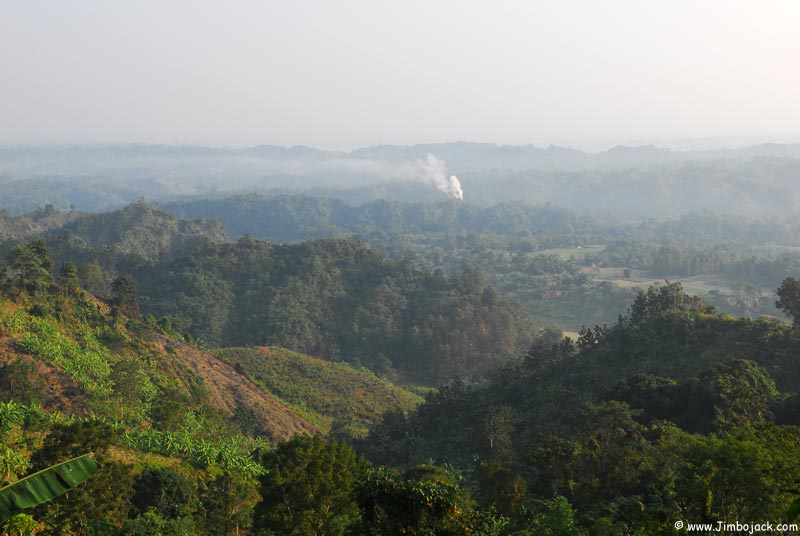
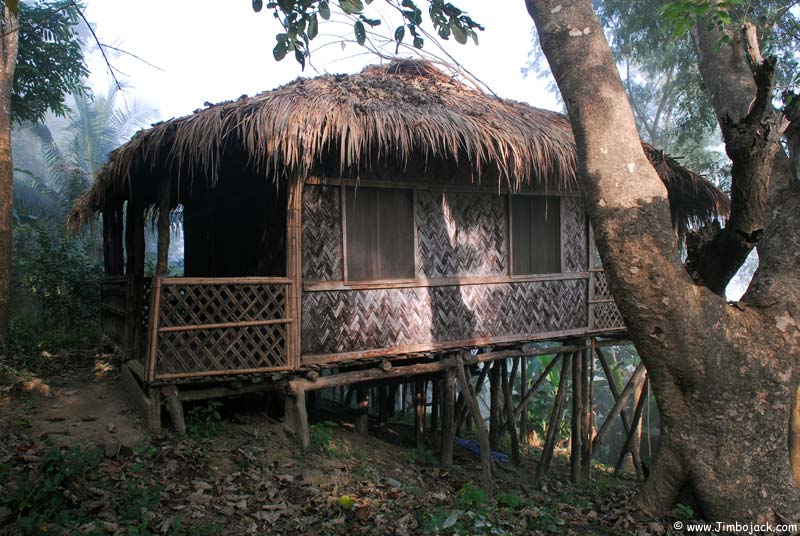
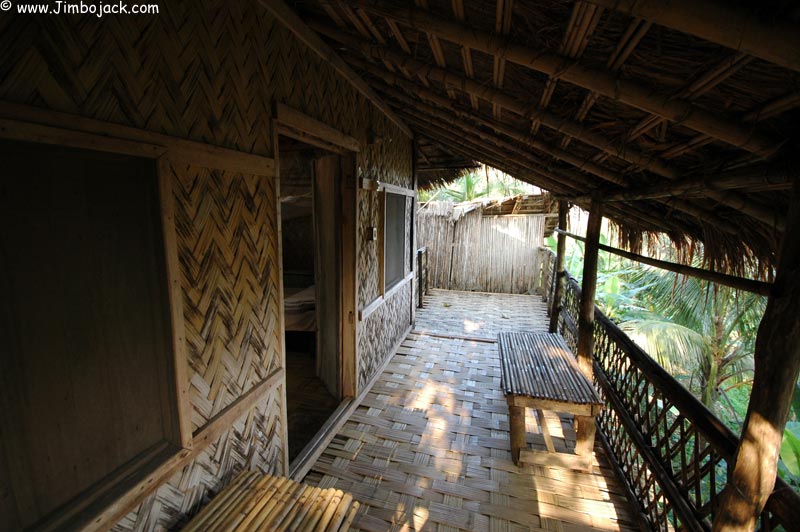
Once again I hope you enjoy this series of photos, more are on my website here: http://www.jimbojack.com/South_Asia.htm
I plan on posting at least another 2 series each from Bangladesh and India, but my next post will be from a different part of the world, just to have some variety
Here is a series from another part of Bangladesh that I visited:
The Chittagong Hill Tracts are located in south-eastern Bangladesh, near the borders of Myanmar (Burma) and India. Out of an estimated population of between 1 and 1.5 million people, around 50% are tribal peoples. Another 45% are Bengali Muslim settlers that moved into the area. The forced Bengali settlement began in the 1970's and 1980's, it was fiercely resisted by the tribal population who formed guerilla groups such as the Shanti Bahini. This particular group no longer engages in military operations following the signing of a peace treaty with the Bangladeshi government on 2 Dec. 1997.
The Bangladeshi government, military and settlers have been accused of various human rights abuses, killings, torture and committing genocide against the tribal peoples. Various massacres took place during the 1980's and early 1990's until a peace treaty was signed in 1996. Amnesty International has excellent documentation of what happened available on their website.
Traveling in the hill tracts today is fairly difficult due to the restrictions imposed on foreigners by the government. Many areas are completely off limits to foreigners, others are possible to visit with a special permit which is somewhat difficult to arrange. When visiting some villages, a police escort is necessary in order to be allowed into the area where they are located. There is still a small resistance/separatist movement active in the Hill Tracts, as well as various armed bandit groups who sometimes target foreigners in order to gain political influence or demand ransom. This happened to a group of Scandinavians who worked there. The place that arranged my permit for me was overran with gunmen who kidnapped a relative of the owner and kept him for ransom. A few months before I arrived in Banderban, a group of tourists was stopped and robbed by another bandit group, while the guide was kidnapped and held for ransom. Despite this, I really wanted to go and see the area, so I made arrangements for a permit.
It is very difficult for foreigners individually to go to the Hill Tracts. I had to arrange a room with a local tour agency for them to file all the necessary paperwork with the authorities on my behalf. This is absolutely necessary in order to be allowed through the many military and police checkpoints into the Bandarban area.
There were at least 9 people that had to receive my official paperwork so that I would be allowed through the checkpoints!

Once I had all the necessary paperwork, it was fairly easy to go through the few military/police checkpoints on the road to Banderban. As soon as I arrived a plain clothes policeman followed me until he was sure I was registered at the hotel I had reservations for (he followed me into the reception to make sure I was registered!), he finally left me alone when I went to my room.
The next morning I went with a local guide (strongly recommended by the police) to a local tribal market in the city of Banderban (I was actually staying a few kilometers outside of the city in the jungle). Here are some photos:
BTW, I should mention that tribal people hate having their picture taken, they usually refuse so I tried to shoot some candids in the streets/markets. Bengali people on the other hand love to pose for photos. While in Bangladesh, every day I had a lot of requests from people if they could take a picture with me as a souvenir for them. I felt like a rock star

Women selling snails to be cooked. They are from the Marma tribe



This is a Bangladeshi (Bengali) woman, notice how different she looks compared to the women above

This is a Water Monitor lizard for sale at a market as food. To some tribes, this is considered a delicacy

Pork, since the vast majority of Bangladesh is Muslim, you will only see this in tribal markets (Most tribal people are Animist, Buddhist or Christian)

Boy selling betel nut leaves

These are flowers from a shrub, they are used for cooking

Bangladeshi (Bengali) Muslim woman buying dried fish

Man selling betel nuts. Many people in South Asia (Especially India & Bangladesh) chew them cut in pieces and wrapped in leaves as a stimulant. When I chewed it, it reminded me of chewing coca leaves in South America (It has the same mild numbing effect in your mouth)

Various other tribal people at the market


The woman below is Burmese, the design on her face is makeup

Following photos were taken on the river right next to the tribal market



Local village, the tribe living here is Bawn. On the roof of the middle hut you can see a solar panel bought with a loan provided by the UN. These panels and possibly some car batteries provide all the electricity for the entire village.

The person on the left was my guide during for the few days I stayed in Bandarban. Nobody in this village spoke Bangla (nobody in this area speaks English), without him I would have no way of communicating with the local people

Inside of a typical family house, in this case there was a family of 7 people. The grandmother in the photo above, a husband and wife and 4 children. In some cases a family as big as 15 shares a house like this.


One of the kids that lived in the house became very curious about what I was doing in his home

Chimbuk is in a very restricted area. Even though I had all the necessary permits, the only way I was able to go there was by hiring a car with a driver, a guide, and an escort of 3 armed police men who followed me around everywhere I went. Here they are outside of a hut I visited waiting for me.

Kids in the village

Photo of my car/ escort

Inside of a local shop

View of the surrounding hills

The next day I decided that I wanted to go to another village (Tripura tribe) Unfortunately I would not be able to go there without at least 2-3 armed police escorting me. I decided that I really didn't want to have them following me around (It's very intimidating to go into a tribal village with and armed police escort, nobody wants to talk to you and people tend to go into their houses). I came up with a story about wanting to go to the market, and lied to them about my plans. After a few minutes of arguing they decided it was ok for my guide and I to go by ourselves provided we only went to a local shop along the main road.
My guide and I went along the main road for a few hundred meters, and once we were far enough from the police with cut into the jungle and walked for a few kilometers through it to go to the village from another direction. It was a big detour, but it was also the best day I had in the Hill Tracts.
The following photos are from Bengali villages along the way.




The rivers that run through the villages are usually pretty dirty. People wash their clothes, pans, dishes and bathe in the river. In order to have a supply of fresh water for drinking and cooking, small clean streams are used. Here the local villagers constructed a bamboo channel for the fresh water, making it easy to collect for household use.

Following photos are from a Tripura village. Originally Buddhist, many of them were converted to Christianity by missionaries (Mostly by bribing them with food)






The following day I walked through the jungle down to the river and hired a local boat to take me to Bandarban


The water level in the river was pretty low when I was here, the dry parts of the riverbed contain very fertile soil and are used to grow vegetables.




Woman bathing in the river

Burmese Buddhist temple in Bandarban


Boys at a local fair, the first one is selling betel nuts/leaves to chew, the second is working at a carnival game. If you throw the ring around the packet you win. Everybody wants the packs of cigarettes, second prize is....soap!


Views of and around the bamboo hut where I stayed. It was the most expensive accomodation I had during my stay in Bangladesh at $10 a night



Once again I hope you enjoy this series of photos, more are on my website here: http://www.jimbojack.com/South_Asia.htm
I plan on posting at least another 2 series each from Bangladesh and India, but my next post will be from a different part of the world, just to have some variety
Phillip
Just back from Europe, Eastern Turkey, Iraq and Iran, new photos coming soon!
Over 100 Countries, thousands of pictures, one Website (being redesigned at the moment)
www.Jimbojack.com
Just back from Europe, Eastern Turkey, Iraq and Iran, new photos coming soon!
Over 100 Countries, thousands of pictures, one Website (being redesigned at the moment)
www.Jimbojack.com
0
Comments
Thanks for taking us on your trip, it was quite colorful. How much did your journey run you for . Just getting the papers seemed to be quite a trip in it's self. Great pixs the one of the kids are exceptional.
Best
John
Mod edit: remove redundant post.
"One shot ata time ":photo
http://www.pinamedia.com
http://www.pinamedia@gmail.com
Rick-Matassa.smugmug.com/
Hi, I'm glad you enjoyed it.
The papers are technically free, but you need to make a reservation at a hotel in the area and have them vouch for you. So usually they will do it for you. Traveling without reservations is not possible, you will be denied a permit and stoped at one of the checkpoints along the way.
The police escort is also technically free, but it's customary to give them a tip (Anywhere between $1-$2 per day). If they don't feel like walking somewhere, they can say that you simply cannot go there and that's it.
Everything, including the transport, food, guides, accomodation, tips, etc. cost me around $100 for three days, so it's not too expensive.
BTW, since you replied to my original post, all the pics I posted show up again in the reply, could you please edit your reply to remove that? Thanks
Just back from Europe, Eastern Turkey, Iraq and Iran, new photos coming soon!
Over 100 Countries, thousands of pictures, one Website (being redesigned at the moment)
www.Jimbojack.com
But together? Brilliant. Thank you so much for sharing them.
Brilliant photos and story - I really enjoyed it
Lesley
Regards,